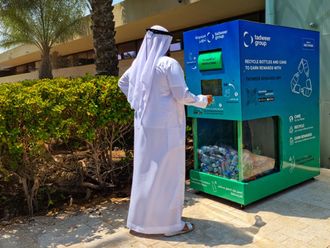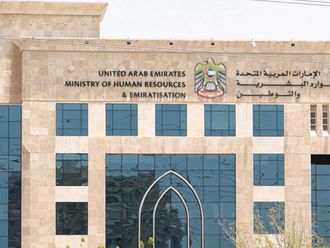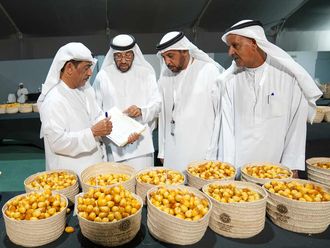
Imagine walking through rain and not getting wet. The thousands of visitors who walked through Random International’s art installation, Rain Room, at the Barbican Centre in London and the Museum of Modern Art in New York, experienced exactly that. One of last year’s most popular installations, sensors in the 100-square-metre field of falling water would detect visitors’ movements and the rain would stop falling on them. The experience allowed them to feel what being able to control the weather might be like.
Water as expression
In historic Istanbul, Italian artist Angelo Bucarelli’s site-specific contemporary installation Water. Like Tears of Love was set up in the ruins of the oldest hammam in the city. It was also the centrepiece of the Italian cultural programme parallel to the 13th Istanbul Biennial. The artist explored the theme of water as the basis for the identity of the cities of Constantinople, Byzantium and Istanbul.
In Bristol, England, Cologne-based artist Matti Braun placed stepping stones made of logs sawn from a 150-year-old Douglas fir, in a room flooded with water (pictured left). Titled R.T./S.R./V.S. it paid homage to an unmade film by Bengali film-maker Satyajit Ray, which is said to have inspired Steven Spielberg’s E.T. the Extra-Terrestrial, and features a lake in its opening scene where an alien spacecraft crashes.
Mesmerised by its sensuality, fury and scarcity, artists worldwide are using water to explore cultural identities, political action, artistic theory and sustainable living. The defining factor of the 21st century, water represents wealth, purity and power; will shape the destiny of nations and civilizations; and will dictate the way we live.
To explore the fluidity of water borders on facetious, but the nature of it lends itself to a multitude of expressions, from art as social intervention to education and an inner journey of self-discovery.GN Focus shines a spotlight on creative individuals whose work celebrates the intimate connection between art and water, and highlights the social and environmental issues surrounding it.
The artist: Matilde Gattoni
The work: Water is Life
The purpose: The UN considers water shortage to be a major environmental crisis. We are consuming this precious resource at an alarming rate, says Gattoni, an award-winning photojournalist based in Italy who has lived in the UAE.
“The use of water around the world in the past few years has multiplied by six — twice faster than population growth,” she explains.
The planet contains 1,400 million cubic kilometres of water that covers 71 per cent of Earth’s surface, but 97.5 per cent of it is salty water, and is therefore unusable.
This means the vital hydrous needs of people in 29 countries around the world are not met, and they are consuming less than the minimum amount of water necessary. The discrepancy is so unequitable that in Canada, an individual could receive on average 350 litres of water per day, in Europe they could receive on average 165 litres, while in Africa the amount is just 20 litres of water, says Gattoni.
Gattoni’s work attempts to highlight this gross disparity and explore the impact of water on life across the globe, capturing the vast barren vistas of Africa or the plight of miners at a lake in Indonesia.
The show: Water is Life is an ongoing project and has been exhibited in Dubai, Brussels (including at the European Parliament) and Milan.
The artist: Ammar Al Attar
The work: Sibeel Water
The purpose: Sibeel in Arabic means an act of giving and Al Attar’s work explores the complex notion of charity through the simple act of donating water.
“I was triggered to do a project about water when I read a magazine article that stated ‘the age of water scarcity begins’. I wanted to show people the importance of water and the relationship we have with this precious element,” he says.
Al Attar lives in Ajman and holds a Masters in International Business from the University of Wollongong, Dubai. This work involved him exploring the hundreds of free water fountains that dot the emirates. Donated by people and often found outside homes, shops and in other public places, they represent an ongoing act of selfless giving.
“I went around different neighbourhoods to find out what they look like and found lots of different types. I did a series of photographs and time-lapse videos to show these different types and how people interact with them. The videos show the amount of water that people consume from these fountains,” says Al Attar.
The show: The series was exhibited at Sikka Art 2013 and at Cuadro Art Gallery, DIFC. Al Attar’s work has also been shown in group exhibits in the UAE including at last year’s Sharjah Biennial. In 2011, his work was exhibited at the Thessaloniki Museum, Greece.
The artist: Mohammad Kazem
The work: Walking on Water, Directions 2005
The purpose: Directions 2005 is part of a series of interconnected works that complete Directions 2002, where Kazem tossed pieces of wood into the ocean. “Directions pertains to our future relationships with art and each other, and the specific interrelationships between identity, alienation and geography,” says the Dubai-based artist.
The work was displayed in a cylindrical room with an illuminated scene of the sea projected onto the walls at a 360-degree angle. On the floor were illuminated numbers indicating geographic coordinates, the time, date and mean sea level.
“The idea was to make the viewer feel like he or she was the piece of wood floating in the sea. As the geographic coordinates of the place change, numbers, time and history are all transforming,” he says.
The show: Kazem was the sole artist representing the UAE Pavilion at last year’s Venice Biennale. His work has been selected for biennials and exhibitions in countries worldwide including Russia, Holland, Singapore, Japan, Egypt, India, Germany, and Cuba, for more than two decades. He has also taken part in several Sharjah Biennials and was awarded the first prize for this installation.












